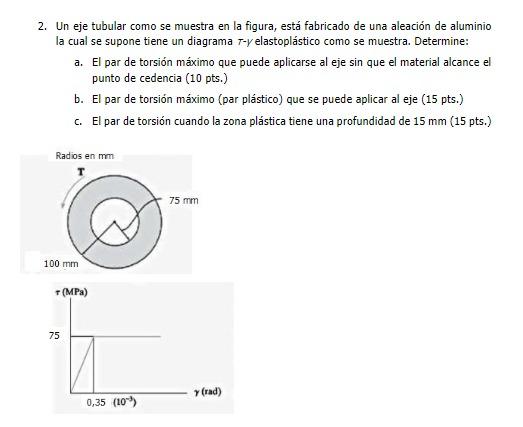¡Tu solución está lista!
Nuestra ayuda de expertos desglosó tu problema en una solución confiable y fácil de entender.
Mira la respuestaMira la respuesta done loadingPregunta: A tubular shaft as shown in the figure, is made of an aluminum alloy which is supposed to have a τ-γ elastoplastic diagram as shown. Determine: The maximum torque that can be applied to the shaft without the material reaching the yield pointb. The maximum torque (plastic torque) that can be applied to the shaft c. Torque when the plastic zone has a depth of
A tubular shaft as shown in the figure, is made of an aluminum alloy which is supposed to have a τ-γ elastoplastic diagram as shown. Determine:
The maximum torque that can be applied to the shaft without the material reaching the yield pointb. The maximum torque (plastic torque) that can be applied to the shaft
c. Torque when the plastic zone has a depth of 15 mmCHECK THE VALUE IN THE IMAGE
CHECK THE VALUE IN THE IMAGE
CHECK THE VALUE IN THE IMAGE
CHECK THE VALUE IN THE IMAGE
CHECK THE VALUE IN THE IMAGE
CHECK THE VALUE IN THE IMAGE
CHECK THE VALUE IN THE IMAGE
CHECK THE VALUE IN THE IMAGE
CHECK THE VALUE IN THE IMAGE
- Hay 2 pasos para resolver este problema.Solución

Estudia mejor, ¡ahora en español!
Entiende todos los problemas con explicaciones al instante y pasos fáciles de aprender de la mano de expertos reales.

